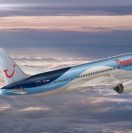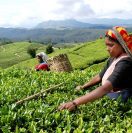Scandinavia to Sri Lanka Direct
Fly Dreamliner direct from Stockholm or Helsinki Thomson Airways now flies their new luxury Boeing 787 Dreamliner weekly to Colombo Sri Lanka from Stockholm in Sweden and Helsinki in Finland. These are both direct non stop flight of 10 hours and Premium Class are also available. These flights are a real show to Thomson Tui’s committment to Sri Lanka as they are an addition to the direct service from London Gatwick. Seats are sold on…
Read more






